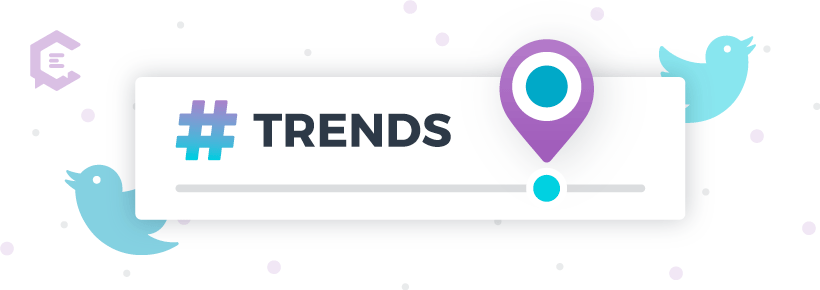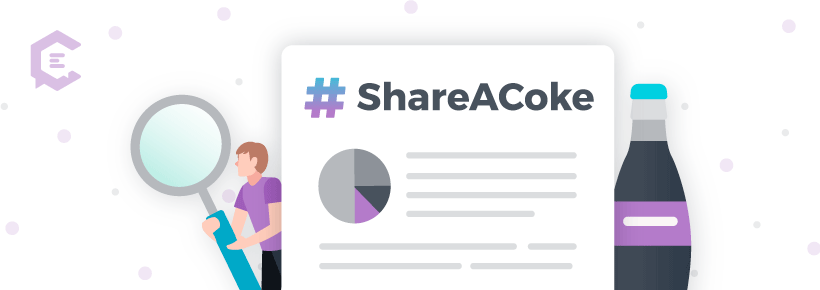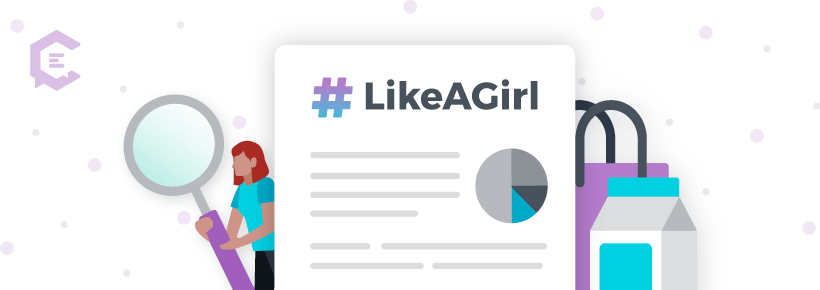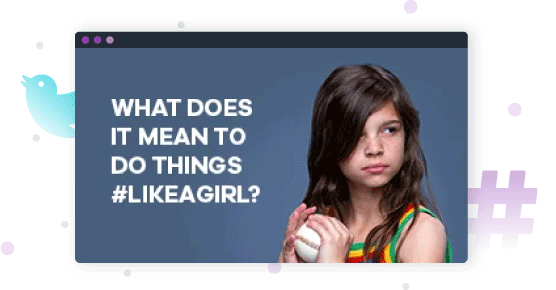As a freelancer or client manager, you have clear intentions for your social media presence. Each post, tweet, or piece of content is designed to build an audience, nurture or engage a community, with the goal to convert followers into customers.
While social media is one of the most effective marketing mediums for gaining, retaining, and converting your audience, hashtags are the key to organic growth.
The likelihood is you are familiar with how hashtags function, but may not know as much about their history and how to use them effectively. Twitter being the place of origin for the hashtag, we will explore its history, Twitter’s hashtag best practices, and case studies so you can discover what type of Twitter hashtag strategy is right for your brand.
The History of the Hashtag
Have you ever wondered, “who started using hashtags for social media?” Well, you can thank technology expert Chris Messina in 2007. His question introduced the idea of hashtags as a way to organize thoughts and Tweets on Twitter.
https://twitter.com/chrismessina/status/223115412
His tweet revolutionized how we use social media and created living-breathing content lanes for like-minded users to discover and connect with others on the platform.
Now, we’re living in the land of hashtags in the digital era, and it’s crucial to know the rules of the game. These tips will help you leverage your organic conversations on Twitter and learn how to maximize hashtags.
Twitter Hashtag Dos and Don’ts:
- DO make it a habit to check the trending hashtags daily. Hashtags change constantly, and the conversations change every hour. Suppose you’re monitoring the hashtags you use for your brand weekly. In that case, you’re missing an excellent opportunity to include your brand in relevant conversation or aligning with things that may not be the best fit for your brand’s messaging. Make it a habit to check your hashtags daily and review Twitter’s trending Hashtags as well. They may seem disconnected from your brand initially, but that’s where you can have a lot of fun with your audience if timing and relevancy align.
Bonus tip: Did you know that you can modify Twitter’s trending topics list by geographic location? If you want to change the location of your trending topics, here’s how:

Adjust your trends settings via Twitter for iOS:
- In the top menu, tap your profile icon.
- Tap Settings and privacy, then tap Content preferences.
- Under Explore, tap Trends.
- Drag the slider next to Trends for you to turn on and receive personalized trends.
- When the feature is disabled, you can change your location by tapping Change location. In the search box, type your desired Trends location or choose from the list.
Adjust your Trends settings via Twitter for Android:
- In the top menu, you will either see a navigation menu icon or your profile icon. Tap whichever icon you have, and select Settings and privacy.
- Tap Content preferences.
- Under Explore, tap Trends.
- Drag the slider next to Trends for you to turn on and receive personalized trends.
- When the feature is disabled, you can change your location by tapping Change location.
- In the search box, type your desired Trends location or choose from the list.
Source: www.help.Twitter.com
- DON’T use a hashtag out of its intended context. Suppose you find yourself looking at hashtags like #TuesdayMotivation or #Scorpion. If you plan to join the conversation of either Hashtag, make sure you understand the meaning and purpose of the Hashtag’s origin. For example, you wouldn’t want to tweet #TuesdayMotivation on a Friday or #Scorpion when your campaign refers to Beatles.
- DON’T expect your audience to use your brand hashtags without a real reason or incentive. Brand hashtags are often unique and recognizable for your brand, whereas generic hashtags have no brand identity. It takes time for consumers to remember your brand hashtags, because they have no reason to—that is, unless you give them a reason. For example, within your social media strategy for an upcoming campaign, create a user-generated incentive to use the Hashtag. It can encourage fans to use the hashtags while tagging friends to your content for a chance to win a prize. Sometimes, the incentive is being featured by your brand. For your audience, that’s a huge compliment, and it gives their profiles additional exposure while you receive the user-generated content and contribution to your Hashtag.
CASE STUDY

The beloved worldwide brand of Coke released their #ShareACoke Campaign in 2013, encouraging fans to participate in the act of giving through sharing a Coke drink to bring a smile. The kickoff or the campaign was brilliant and holistic. From social media and experiential marketing to the brand’s television and billboard advertising, its campaign messaging aligned with beautiful harmony. Consumers not only remember the campaign, but they happily share and tag the company in posts regardless of the platform to join in on campaign participation.
According to a study noted by The Guardian, the campaign reportedly generated over 18 million impressions for Coke and grew their Facebook page by over 870%. Fans around the world shared posts with friends and family while tagging the brand in hopes of engagement recognition. The campaign is still active today, but by fans not and not actively by the brand.
I can't think of anyone id rather #ShareACoke with. pic.twitter.com/yr3JRiPHuZ
— Ambassador of Noodles (@EpinardGuard) July 1, 2021
Bonus tip: If you plan to create sweepstakes, familiarize yourself with the laws around consumer sweepstakes on social media. Any gifts over a certain amount must be taxable, so be sure to maintain compliance legally. Don’t overlook this requirement as your building out your UGC strategy for Twitter campaigns or any sweepstakes you’re planning to execute.
- DO check your spelling, but DON’T use apostrophes, commas, or grammatical symbols. Those of us that are avid writers spot grammatical flaws almost instantly. However, with hashtags, #TheyCanLookLikeOneWord. Suppose you’re not careful, #YouMayHavATypo. Capitalizing your words helps you identify potential errors in your hashtags that could interfere with tracking, consistency, and overall Tweet exposure. Symbols that break hashtags are !, @, $, %, &,*, and any dashes or equal signs. Here are examples of broken hashtags:
-
- #NewYear’sDay
- #Me,myself,andI
- #Peace&Love
- #Ihave$1,000,000dollars
- DON’T use ALL CAPS. This rule aligns with that of email etiquette or digital communication overall. When writing your content, do not use all caps. Your words could translate to your audience as an aggressive tone. Keep all caps out of your content in general, but especially hashtags. The Only exception would be acronyms. An example would be #NASA (The National Aeronautics and Space Administration).
- DO educate your audience on your brand hashtag meanings. If you have unique hashtags associated with your campaigns, be sure to let your audience know the meaning behind your Hashtag—and why they should use it.
CASE STUDY

The Proctor & Gamble brand, Always, created a memorable user-generated Twitter campaign named the #LikeAGirl Campaign. The company rooted its request for fan participation in purpose-driven marketing that encouraged fans to showcase their own perspective on women empowerment to shift the narrative of what it means to be like a girl. With its launch in 2014, the campaign continues to gain traction, and the Hashtag is still active and thriving on Twitter and all platforms.

Source: Always
- DO prioritize consistency for your brand campaign hashtags. Consistency is more than the presentation of the hashtags within your copy. Your repetition helps your audience build lasting awareness of your campaigns, which funnels to consideration and usage from your audience.
- DON’T forget to be consistent in your messaging and engage with your audience. Now that you have your campaign active on Twitter, be sure to acknowledge those using your hashtags. It’s disheartening when people engage with your brand to be ignored, without a response. Do the impactful work of engaging with your audience, and remain consistent.
Bonus takeaway: Twitter is unlike other platforms. Hashtags thrive in real-time, relevant conversations, whereas original content struggles to get traction. The exception to this involves brands and Twitter profiles that have a significant influence on the platform.
As you think of your hashtag strategy for Twitter, do not neglect the power of real-time conversation on the platform. Opportunities of virality happen during events like:
- Physical and virtual conferences or webinars: Whether you’re speaking during a fantastic event or joining as a participant online, you can leverage the power of Twitter by using the official event hashtags. Your content will be seen by many participating, including the audiences beyond that first touchpoint of exposure.
- Twitter trending topics: Trending topics are more than just what’s happening at the moment. It connects people in one common conversation. The tending topics amplify the possibility of viral tweets and organic follower spikes on the platform.
- Major news events: This is similar in concept to the Twitter trending topics. However, with major news events, I recommend you be mindful of your Tweets’ tone, messaging, and approach. Making light of a weighted circumstance have an adverse impact on your brand.
Having learned overall hashtag best practices for social media and Twitter, it’s time to implement. Do the research necessary and have fun engaging. Test live-Tweeting and try to focus on the conversation. The growth will immediately follow.



